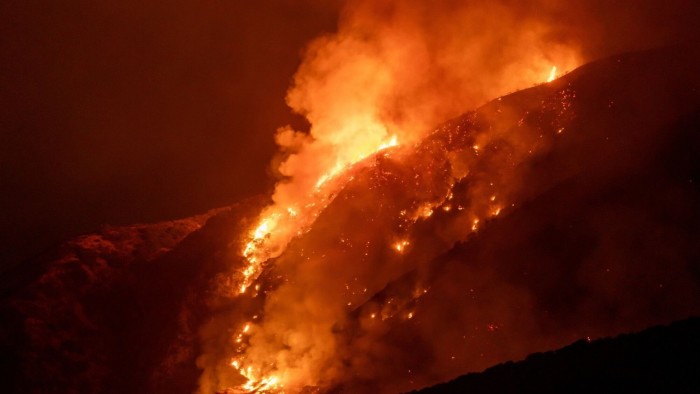Montana’s loss-making fire company survives ex-CEO’s election

Unlock the Editor’s Digest for free
Roula Khalaf, Editor of the FT, selects her favourite stories in this weekly newsletter.
Losses narrowed at Bridger Aerospace this year, according to third-quarter results released days after the aerial firefighting group’s former chief executive Tim Sheehy was elected to the US Senate by Montana.
The company defied fears raised by critics, its own auditors and also us that the persistently loss making group was in danger of not surviving till next summer’s fire season.
The group reported record quarterly revenues of $64.5mn, up a fifth on the year before. On the earnings call, CEO Sam Davis said:
We confidently let the integrity of our results speak for themselves. And we will continue to protect our employees, customers and investors from those negative voices that attempt to defame or mischaracterise our efforts to carry out our mission.
However, flying a small fleet of super-scooper aircraft means Bridger marries the challenge of high fixed costs familiar to all airlines with the unpredictable seasonal demand of summer firefighting. Listed via Spac in January 2023, it is yet to do so profitably.
Bridger makes the vast bulk of revenues in the third quarter, and has been persistently lossmaking throughout its history, leading its auditors to issue a going concern warning with the 2023 full-year figures.
Over the first nine months of the year it generated sales of $83mn, and lost $2.7mn, a much smaller deficit than the loss of $46.2mn reported in the same period last year.
It is also laden with $205mn of debt — reflecting transactions overseen by Sheehy, who stepped down as CEO in July having generated large profits for early backer Blackstone. If last year is a guide, interest costs on borrowing in the fourth quarter will exceed revenues.
Which raises a old question about the best metric to judge such a company.
Bridger said that increased utilisation of its aircraft in the quarter led to higher depreciation, maintenance and travel expenses, reflecting the nature of an asset-intensive operation.
It also prefers that investors ignore depreciation, and instead focus on an adjusted version of Ebitda, which came to $40.2mn in the first nine months of 2024.
Should we judge an airline by a figure which doesn’t reflect the cost of its planes? Please share your twopence in the comments.
Further reading:
Private jet disrupter: the debt-fuelled ascent of Thomas Flohr’s VistaJet (FT)
#Montanas #lossmaking #fire #company #survives #exCEOs #election





